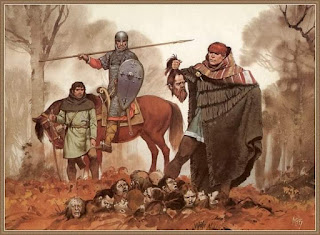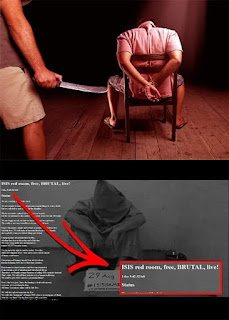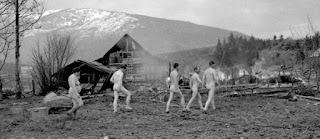Norman mercenaries of the Imperial army and a Greek archer examine the severed heads of the dead crusaders
Norman mercenaries of the Imperial army and a Greek archer examine the severed heads of the dead crusaders (corps of Peter the Hermit with 20,000 men and Walter Sans Avoir with 25,000 infantry, 500 cavalry)of the "Peasants Crusade" ambushed by the 20,000 Seljuks of Sultan Kilij Arslan I ' coming from Nicaea of Bithynia, and 15,000 Turkomans of Emir El-Khan, rushed from Ephesus, on October 21, 1096:
In the fierce battle that followed, around 07:00, near the fortress of the Kivotos, (in today's Cemlik in the Propontis area), the approximately 45,000 crusaders were cut to pieces in the dense Bithynian forests, and those who survived (about 3,000) under Godffrey de Burell took refuge in the abandoned fortress of Kivotos (Civetot) about five kilometers further east.
For the approximately 10,000 women and children, elderly and other civilans who had remained in the Crusader camp, however, there was no mercy from the Turks:
As the German chronicler Ekkehard of Aura reports, who spoke to survivors of the battle: "The Turks began to enter the camp from everywhere , cutting off all avenues of escape. They dismounted from their horses, and first butchered the priests, who were at that time celebrating the morning mass.
They entered the tents, raped the women, seized the most beautiful as well as the most beautiful children, boys and girls,the rest that they didn't like they were killed as well as all the old people. They cut off the breasts of old women, leaving none alive. They took everything, even the tents, on their shaggy and ugly horses, on carriages, and left as night fell". (Die Chronik von Ekkehard die Aura, 133-9).
The panicked crusaders, as mentioned, took refuge in the large but unfinished (from 1087) fortress of Kivotos, which once had a garrison of two hundred English Varangians.
The fortress was strong, had water, but had no doors for the gates, so the 3,000 surviving crusaders put their ...shields for gates determined to defend to the last.
15,000 Turks surrounded the fortress, "thirsty for blood and howling like wolves", determined to slaughter them all.
But this did not happen, because the Imperial army under General Konstantinos Katakalon had already landed at Pegai (springs of water), ten kilometers away, and was "approaching rapidly".
On hearing the news that the Imperials were approaching, "The Turks escaped in the night". The sight that the Imperial soldiers saw on the battlefield was shocking: Piles of corpses, many with up to twenty(!) arrows on them, women with open bellies, old men with scratched skulls, priests with slitted throats, children with gouged out eyes, and severed heads, many heads...
Many years later, (1140) Anna Komnene reports, after having conversed with veterans of the Imperial army who had collected the corpses of the westerners, (about 40,000) that they did not just form a hill, but ... a mountain(!) as the German Albert of Aachen confirms, who passed through there with the main body of the First Crusade, in May 1097 and he was amazed by the extent of the destruction, "by the bleached bones and skulls, which formed heaps", eight months later....











Comments
Post a Comment